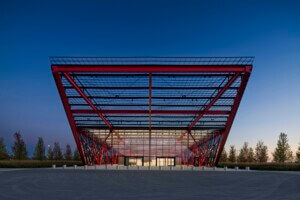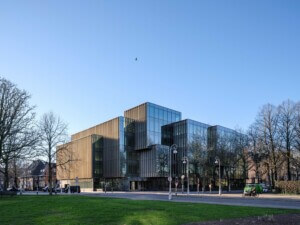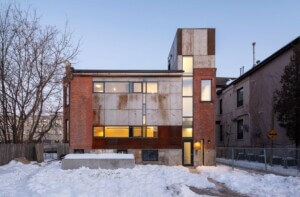While Venice may be home to the first 3D-printed concrete footbridge to be constructed entirely sans reinforcement or mortar, the similarly canal laced city of Amsterdam, not to be outdone, has unveiled the world’s first 3D-printed steel pedestrian bridge. The long-awaited project, first announced in 2015, was dedicated on the Oudezijds Achterburgwal canal in the city’s Red Light District on July 15. The ceremony was attended by Her Majesty the Queen of the Netherlands, Máxima, who was assisted by a ribbon-cutting robot during the festivities.
Spanning nearly 40 feet across the canal, the curving 6-ton stainless steel structure was constructed by Amsterdam-based 3D metal printing technology company MX3D using a wire arc additive manufacturing process that marries advanced robotics with welding. With the aid of four robots, the entire printing process took just six months. The completed bridge, designed by Joris Laarman Lab with Arup serving as lead engineer, was first unveiled in October 2018 during Dutch Design Week. Several load-testing rounds followed, the last of which was carried out in the fall of 2019 with plans to install the structure in early 2020. However, ongoing site prep work at the canal delayed the factory-produced bridge’s installation to just last week.
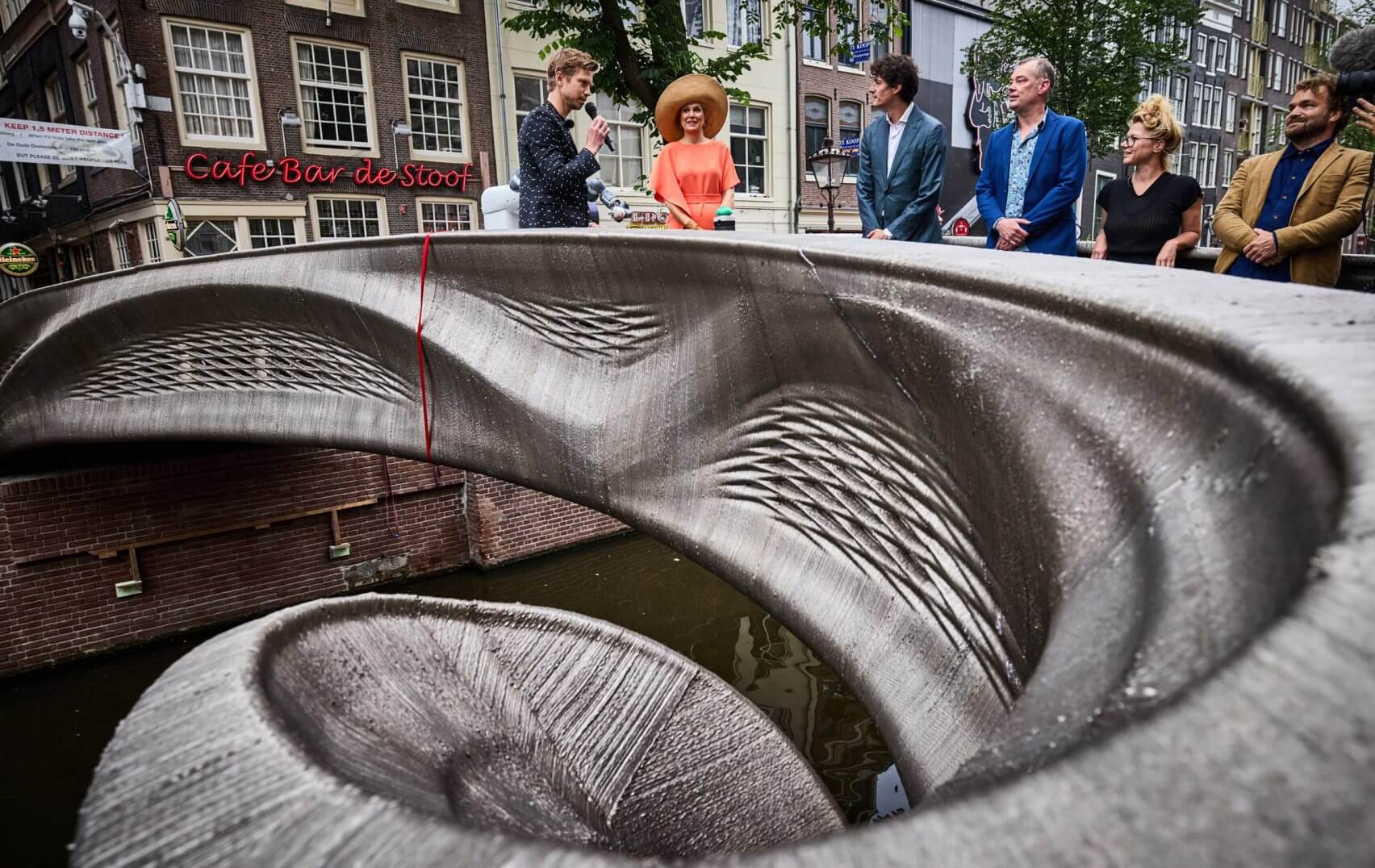
As reported by the Associated Press, the stainless steel structure, dubbed the MX3D Smart Bridge, will remain in place for at least two years while the footbridge that previously spanned the canal undergoes renovation.
During its two-year run, the MX3DB Smart Bridge will serve as a “living laboratory,” enabling researchers from the Alan Turing Institute’s Data-Centric Engineering Programme, a consortium of researchers hailing from Imperial College London and the University of Cambridge, to monitor and analyze the performance of the sensor-equipped span as it handles foot traffic in real-time.
“A 3D-printed metal structure large and strong enough to handle pedestrian traffic has never been constructed before,” said Professor Leroy Gardner of Imperial College’s Department of Civil and Environmental Engineering in a news article released by the school. “We have tested and simulated the structure and its components throughout the printing process and upon its completion, and it’s fantastic to see it finally open to the public.”
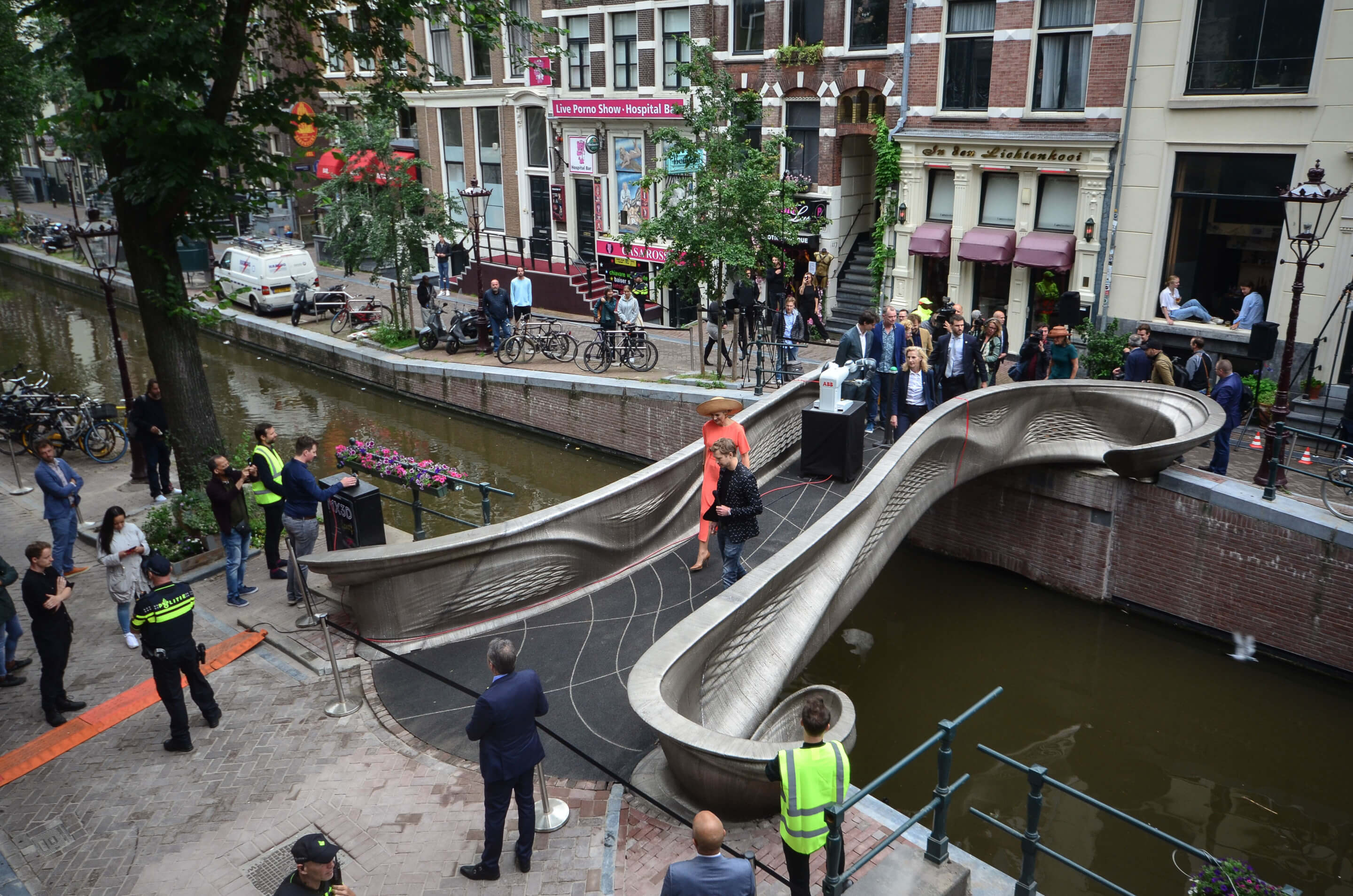
Imperial College London further detailed the research that will be conducted at MX3D Smart Bridge:
“The data collected will enable researchers and engineers to measure the bridge’s ‘health’ in real time, monitor how it changes over its lifespan and understand how the public interacts with 3D-printed infrastructure.
The data from the sensors will be put into a ‘digital twin’ of the bridge — a computerised version which will imitate the physical bridge with growing accuracy in real time as sensor data come in. The performance and behaviour of the physical bridge will be tested against the twin, which will help answer questions about the long-term behaviour of 3D-printed as well as its use in real world settings and in future novel construction projects.”
Alongside the Alan Turing Institute, the multidisciplinary consortium that worked to develop and build the “vast sensor network” and digital twin were Autodesk, the Amsterdam Institute for Advanced Metropolitan Studies, the BRIDE Project at Tu Delft, and the Construction Management and Engineering group at the University of Twente.
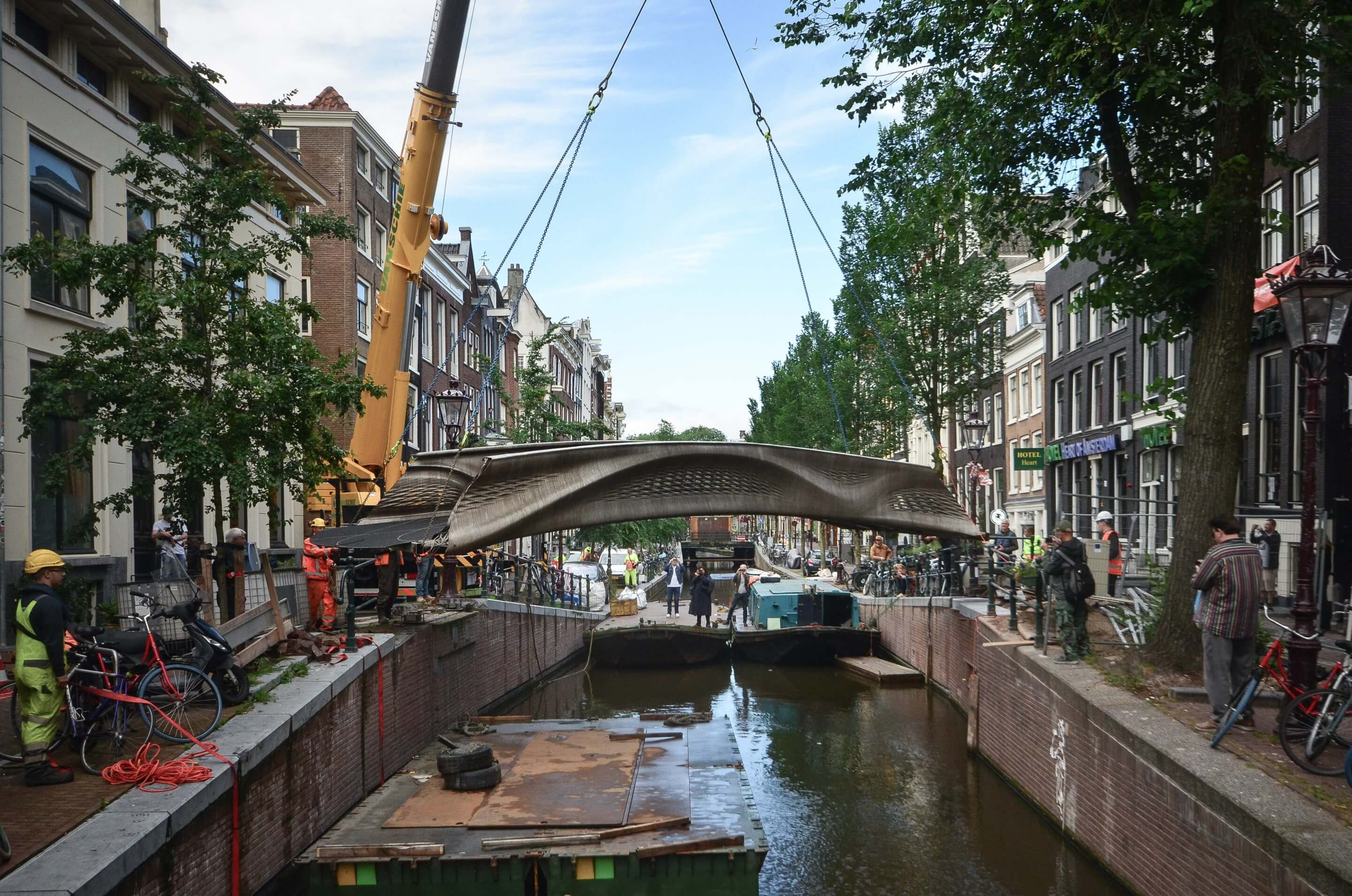
While researchers studiously gauge the performance of the first-of-its-kind 3D-printed steel structure, city officials will be on the lookout for a new kind of tourist descending on the neighborhood, one not necessarily keen on partaking in the myriad vices offered up in one of the world’s most famously debauched districts.
“This may attract a new kind of visitor, one who is more interested in architecture and design, which will help change the way the neighborhood is perceived as more of something you want to visit but visit respectfully than it has been over the few last decades,” Micha Mos, a councilor for Amsterdam municipality, told the AP.
That said, the city may have an uphill battle ahead as the MX3D Smart Bridge, located at Oudezijds Achterburgwal 114, is in close proximity to bawdy Red Light District landmarks that include the notorious “erotic theater” Casa Rosso and a nurse-themed fetish bar.








